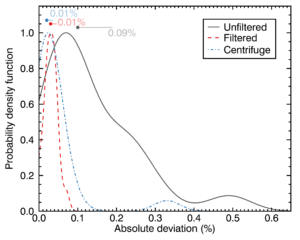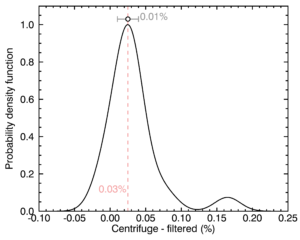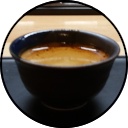This post is my thoughts on an experiment I’ve conducted. I’m not getting too into details or numbers here. If you’d like to see everything that went into the experiment, and see the full set of data, I highly encourage you check it out on the Experiment Page.
Introduction
I like to measure my espresso. All of my coffee, in fact. Keep a log of almost every brew I make, and that log includes the measured tds. Supposedly (spoiler: correctly so), the espresso needs to be filtered before being measured for accurate and consistent measurements of the tds. For somebody like myself doing it this frequently, and just for personal use, the filters used for this are rather expensive.

But there’s a proposition for another way, spinning the espresso around until the sediment and oil separate from the espresso. Kostverlorenvaart, a blog by Frans Goddjin, has a couple posts briefly touching on the subject with some promising results, but with an older version of the VST that only measures to the tenth of a percent tds instead of the hundredth, as well as a small sample size.
So I set off to do some testing of my own and see what trends emerge comparing the VST syringe filters, centrifuged espresso, and unfiltered espresso over 20 trials, and with .01% resolution on the newer VST refractometer. As well as taking two samples with each method so that I could compare the variation for each as well.
Jonathan Gagné will be joining us to provide some useful insight on the data collected and plots to help us visualize what’s going on. Check out his blog, Coffee Ad Astra, coffee brewing with a scientific focus. There’s some seriously great content on coffee extraction, blind testing, grinding, brewing, and more.
The Experiment

For my testing I pull a shot, mix it up, then take six samples. One of each and then one of each again. I drink the rest of the shot because, hey, I ain’t gonna waste good espresso. The centrifuged samples get spun at 13,000rpm for five minutes, then each sample is measured and recorded in the order they were taken. There’s more to it than that, and if you’re interested you should definitely check out the Experiment Page.
My Findings

This plot from Jonathan Gagné is a great way to visualize the data, and really helps to show just how large the difference in variation is.
In variance, I found minimal difference between VST filters and centrifuging, save for one outlier which I believe to have resulted from disturbing the sediment when drawing the sample from the centrifuge tube. I believe the variation in both is coming mostly from espresso not being a homogeneous drink, and just being a difficult thing to draw six exactly identical samples from. The unfiltered samples had variation both several times higher, and with a much wider spread to make it harder to predict.


In relation to VST filters, both other methods read consistently higher, with the centrifuge being higher in 17/20 trials and the unfiltered being higher in all 20/20. However the centrifuged samples were only minimally higher, keeping it very consistent with the industry standard VST filters. The unfiltered had over ten times that difference, and a wider variance in how different they were from VST.
Overall, the performance of VST filters and centrifuging is similar, and either makes for a significant improvement over trying to measure unfiltered samples.
Conclusions and Recommendations
To me, the centrifuge and VST filters are close enough that it’s going to depend more on user requirements. If you need readings fast and can buy them in bulk, the filters are an effective option. If you don’t mind waiting ~5 minutes for the centrifuge to run, and measure often enough for the savings to be worth it, the centrifuge is a great way to prepare your shots for measurement.
For me personally, that means I’ll be centrifuging my shots as my day to day method.
Unlike some comments from Socratic Coffee, I can’t recommend skipping filtering altogether with how far it sits above the other two methods and how much more variance there is. Even for strictly internal usage not compared to VST, the variance makes it a borderline useless measure. At least with the style of shots I’m measuring with it.
If, like me, you opt to use a centrifuge, I have a few recommendations on how to do it.
- Spin it fast enough and long enough. I use 13,000rpm and 5 minutes. In some preliminary testing (without nearly enough data to be conclusive), I found that slower speeds didn’t do the job as well. This probably varies per centrifuge and rotor size.
- Be careful when extracting the espresso from the tubes. You don’t want to draw oil from the top or sediment from the bottom.
- Using 1.5ml tubes lets you take small samples to measure to minimize waste, but probably makes it harder to avoid the oil and sediment versus larger tubes. I like only needing a smaller sample, but pick your poison.
- Make sure to balance the rotor. You can take two samples from the shot if you like, or you can balance one sample with an equal amount of distilled water.
- You can find used lab centrifuges cheap (~$100-$150) on eBay, but be careful you’re buying what you want.
- If using a used centrifuge like me, be sure to check that the rotor itself is well balanced when you get it.
